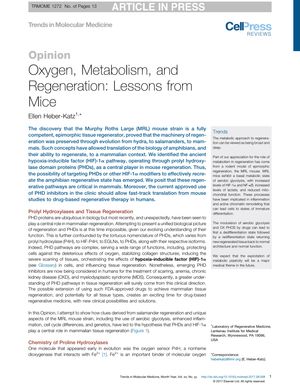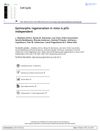Oxygen, Metabolism, and Regeneration: Lessons from Mice
October 2017
in “
Trends in Molecular Medicine
”

TLDR Mice with enhanced regeneration abilities may help develop new regenerative medicine therapies.
The document from 2017 explores the regenerative abilities of the Murphy Roths Large (MRL) mouse, which can regenerate tissues similarly to amphibians, and the role of prolyl hydroxylase domain proteins (PHDs) and hypoxia-inducible factor (HIF)-1α in this process. The MRL mouse uses aerobic glycolysis for its metabolism, which supports cell proliferation and is linked to regeneration. The study found that MRL mice have increased levels of HIF-1α and inflammation, which are crucial for tissue regeneration. It also observed that PHD inhibitors, which are already in clinical use for other conditions, could potentially be used to induce regenerative healing in mammals. The document suggests that further understanding of PHD pathways and their inhibitors could lead to new regenerative medicine therapies. Additionally, it raises questions about the optimal use of PHD inhibitors for tissue regeneration, including the desired levels of HIF1, potential side effects, and the best methods for drug delivery. The research was supported by the National Institutes of Health.




